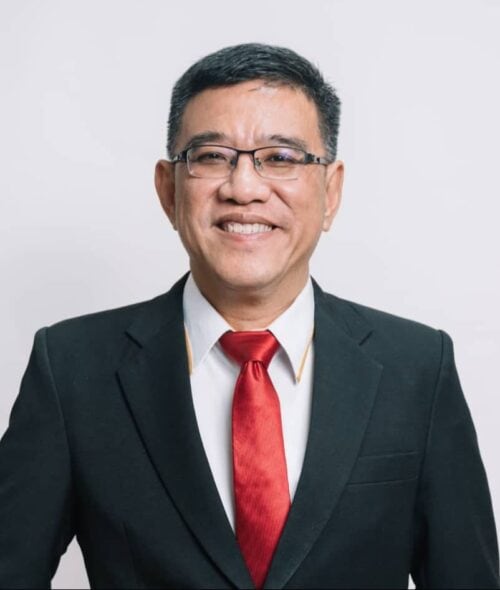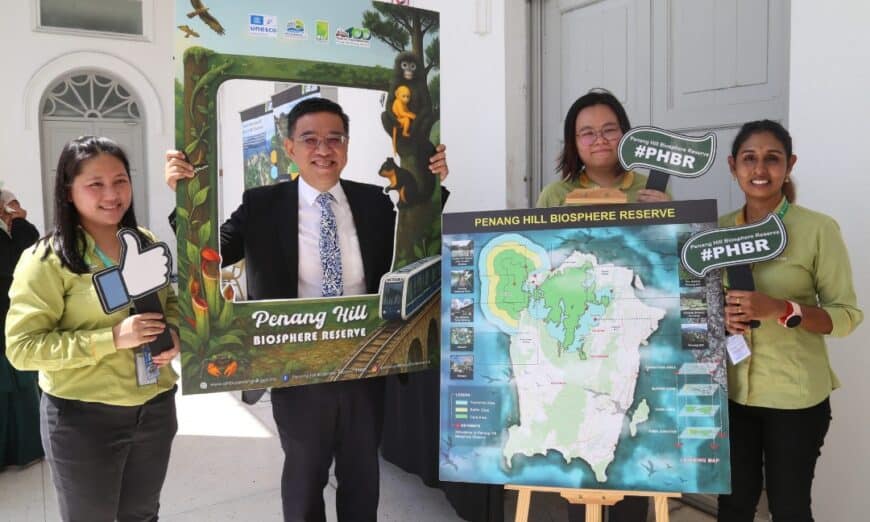THE tourism industry remains one of Penang’s most vital economic pillars. Blessed with colonial and local architecture, rich cultural heritage, scenic landscapes, and a thriving industrial ecosystem, the state has long been a preferred destination for travellers.
However, according to a report published in Travel and Tour World, the sector is grappling with rising operational costs, a shortage of skilled workers, and increasing concerns over an oversupply of accommodation options.
The report recommends a comprehensive marketing campaign to revitalise tourism and boost visitor spending.
It also cites data from the Malaysian Association of Hotels (MAH), which shows that Penang now has 17,000 registered hotel rooms, up from 14,000 in 2022. Despite this growth, the average hotel occupancy rate has remained relatively stable at around 62%, a figure that is also reflected on short-term rental platforms such as Airbnb.
To tackle the issue of oversupply, the report proposes the adoption of an Accommodation Development Rights (ADR) system. This system would allow local authorities to regulate the construction of new accommodation facilities based on key indicators such as the average occupancy rate. The aim is to prevent market saturation and ensure sustainable profitability for industry players.

Buletin Mutiara spoke with Wong Hon Wai, the state executive councillor for Tourism and Creative Economy, for his insights on addressing these challenges. Below are his views.
On labour shortage
The labour shortage in the hospitality and food services sector has been a persistent national challenge since the Covid-19 pandemic. While Penang, like other states, is affected by this issue, it is important to note that manpower policies (including foreign worker quotas, visa processing, and recruitment frameworks)fall under the jurisdiction of the Federal Government, particularly the Ministry of Human Resources. This is not a Penang-specific issue and requires structural reform at the federal level.
That said, the industry should place greater emphasis on developing local talent by strengthening Technical and Vocational Education and Training (TVET) pathways, enhancing on-the-job training, and fostering closer partnerships with educational institutions to build a more resilient and skilled local workforce.
In essence, while Penang is committed to facilitating local solutions and collaboration, effective and sustainable manpower relief — both in the short and long term — ultimately depends on coordinated federal policy response.
On oversupply of hotel rooms
In my view, while concerns about a potential oversupply of hotel rooms in Penang are understandable, the recent and upcoming additions to the state’s hospitality capacity should be viewed as a strategic move aligned with Penang’s growing tourism and business demands.
From August 2023 to April 2025, a total of 13 new hotels have commenced operations in Penang, contributing an additional 2,311 rooms to the market. This brings the total number of hotel rooms in the state to approximately 22,500. This increase in capacity is timely and well-targeted, particularly in emerging areas such as Southwest Penang and Seberang Perai, which are seeing growing tourism activities and urban development.
Many of these new establishments are internationally branded hotels under names such as Ascott and Marriott. These brands not only elevate Penang’s hospitality standards but also support the state’s ambition to attract high-spending tourists and global business travellers. Penang is already a prominent destination for Meetings, Incentives, Conventions and Exhibitions (MICE), welcoming thousands of delegates annually. The availability of reputable hotel brands is a key factor in securing large-scale international conferences and events.
Looking ahead, the opening of the Penang Waterfront Convention Centre (PWCC) in October 2025 will further strengthen the state’s position as a leading MICE destination in Northern Malaysia. As one of the largest purpose-built convention centres in northern Malaysia, PWCC is expected to unlock new opportunities for hosting international summits, trade expos, and corporate gatherings. The synergy between high-quality hotel infrastructure and world-class event facilities will undoubtedly enhance Penang’s competitiveness in the global MICE market.
Furthermore, Penang’s positioning as a regional hub for the semiconductor industry continues to drive demand for quality business accommodation. The establishment of these internationally recognised hotels enhances our competitiveness in attracting foreign investors, corporate delegations, and long-stay professionals.
Importantly, the latest data from Tourism Malaysia confirms this positive trajectory. In 2024, a total of 8,237,072 tourists stayed in hotels across Penang, compared to 7,272,526 in 2023 – an impressive 13.3% increase in just one year. This sharp rise in hotel guests is a clear indicator of sustained demand and robust tourism growth in the state. It also reinforces that the expansion in hotel supply is being matched by rising visitor numbers.
Beyond hospitality infrastructure, Penang is investing heavily in broader tourism-supporting infrastructure. We are upgrading the Penang International Airport, which upon completion will be the largest in northern Malaysia. In addition, the upcoming LRT system — making Penang the first state outside the Klang Valley to implement one — and the development of the iconic Penang Hill cable car project are game changers that will greatly enhance connectivity and tourism appeal.
Penang is a unique destination with a highly diversified tourism product. From UNESCO World Heritage Sites to vibrant street food, from tranquil beaches to world-class medical tourism, major events tourism and cruise tourism. We are able to cater to a wide range of markets and preferences. Moreover, our source markets are diverse, ranging from international tourists from different nations to a strong and growing domestic base. This diversification helps reduce unsystematic risks in our tourism market, making Penang’s tourism sector more resilient and sustainable in the long run.
Therefore, rather than signalling oversupply, the growth in hotel capacity reflects a forward-looking strategy to strengthen Penang’s tourism ecosystem, diversify its offerings, and support sustainable economic development.
The hotel industry has to be agile and continuously evolve in response to emerging challenges. It cannot afford to rest on its laurels, especially in a highly competitive and fast-changing tourism landscape. Innovation, service quality, and strategic adaptation are crucial for long-term resilience and growth.
On the proposed Accommodation Rights Development (ARD) system
As this idea may carry significant long-term implications for the industry and development planning, we believe it is important to first gather wider feedback and perspectives from other stakeholders, including the Malaysian Association of Hotel Owners (MAHO), developers, investors, and local authorities.
Any regulatory mechanism that aims to manage hotel development must strike a balance between encouraging sustainable growth and ensuring a competitive, investor-friendly environment. We remain open to exploring the feasibility of such mechanisms, provided they are supported by data, industry consensus, and a clear roadmap for implementation.
On lower than expected hotel occupancy rate during the Raya period
In my opinion, while earlier forecasts suggested high demand for hotel bookings during the recent Hari Raya Aidilfitri period, the actual occupancy rates may have appeared lower than expected due to a mismatch in public perception. However, the data tells a different story. According to the Analytical Report by the Malaysian Association of Hotels, the average hotel occupancy rate for selected hotels in Penang in April 2025 was 60.3%, an increase from 55.2% in April 2024. This figure is not only higher than last year’s but also exceeds the national average of 50.6%. In fact, Penang recorded the highest average occupancy rate among all states and Federal Territories. Therefore, although the perceived demand might not have fully aligned with initial expectations, the actual performance was strong in comparison to national trends and past data.
Meanwhile, the number of passengers using the Penang Hill funicular train during the Hari Raya Aidilfitri holiday period increased by 3.4% in 2025 compared to 2024. From 10 April to 16 April 2024, Penang Hill recorded 42,712 passengers, while from 31 March to 6 April 2025, the number rose to 44,146.
These figures suggest that major tourist attractions in Penang continued to draw crowds during the festive season, reinforcing the state’s position as a preferred travel destination during holidays.
On marketing strategies
The Penang State Government is deeply attuned to the pulse of the times and keenly aware of the rising influence of social media, recognising that tourism promotion today is far different from the past. In this new era, Penang adopts a holistic, 360-degree marketing approach that integrates both online and offline strategies, covering both business-to-business (B2B) and business-to-consumer (B2C) engagements to ensure broad and effective outreach.
Our B2B efforts include industry networking, roadshows and direct engagements with key stakeholders such as airlines, hoteliers, travel agents, and tourism boards. At the same time, B2C initiatives like participating in the MATTA Fair and MITM Travel Fair, the Penang State Government has actively positioned itself across every major front.
In terms of media strategy, Penang strikes a balance between traditional platforms such as newspapers, tourism brochures, and trade shows; and the new digital frontier, where collaboration with online travel agencies (OTAs) and influencers plays a pivotal role. This synergy covers the full tourism ecosystem, with strategic partnerships not just with Tourism Malaysia, but also with various airlines, hoteliers, travel agents, tourism spot operators and digital platforms, ensuring a robust and inclusive tourism promotion framework.
Leveraging the power of social media through visually engaging content like images, short videos, and authentic travel experiences, Penang has successfully captivated a new generation of young travellers, amplifying its reputation and expanding its reach to all corners of the globe.
As a result, Penang’s popularity on social media continues to soar with tremendous momentum and unparalleled prominence. Recent data analyses show that Penang leads decisively in key Chinese social platforms such as Xiaohongshu (Little Red Book), Douyin (TikTok China), WeChat, and Weibo, both in terms of topic views and discussion volume, demonstrating its unshakable tourism appeal.
For example, on Xiaohongshu, the hashtag #Penang has amassed a staggering 800 million views and 3.943 million discussions. Related tags such as #PenangFood (310 million views), #PenangExplore (250 million views), and #PenangCheckIn (150 million views) have all surpassed the 100 million mark.
On the short-video platform Douyin, Penang likewise exhibits formidable momentum. The hashtag #Penang has reached 550 million plays, with #PenangVlog (140 million), #PenangPeople (43.23 million), and #PenangFood (57.1 million) showing impressive reach.
Regarding WeChat Index data, as of May 16, 2025, the hashtag #Penang scored over 3.41 million.
On Weibo, Penang-related topics shine brightly as well. The hashtag #PenangTravel alone has exceeded 170 million reads, while #SeaBreezeSilverWavesInPenang has reached 190 million reads.
With the post-pandemic tourism market gradually recovering, Penang has firmly secured a coveted spot among the “most searched tourism cities on social media.” Looking ahead, it is poised to attract an increasing number of visitors from mainland China, Taiwan, Hong Kong, and Southeast Asia to explore this island city that harmoniously blends cultural heritage with modern vitality.
Notably, under the directive of the Penang State Government, Penang Global Tourism launched its official Xiaohongshu account on 25 March 2024. Penang now confidently holds its position as the leading “social media hot tourism city” domestically. This strategic move has proven both timely and critical, serving as a key milestone propelling the Penang tourism brand to new heights of success.
Please note that the hashtags provided here (e.g., #Penang, #PenangFood) are the English equivalents of the original Chinese hashtags used on platforms such as Xiaohongshu, Douyin, WeChat, and Weibo. Since these platforms primarily operate in Chinese, searching these English hashtags directly may not yield the same results.
Story by K.H. Ong
Pix courtesy of PETACE

